Excerpts from Jim Conrad's
Naturalist Newsletter
from the February 22, 2019 Newsletter issued from Rancho Regensis north of Valladolid, Yucatán, MÉXICO;
elevation ~40m (~130 ft), N~20.876°, W~88.170°
BALLOON-VINE
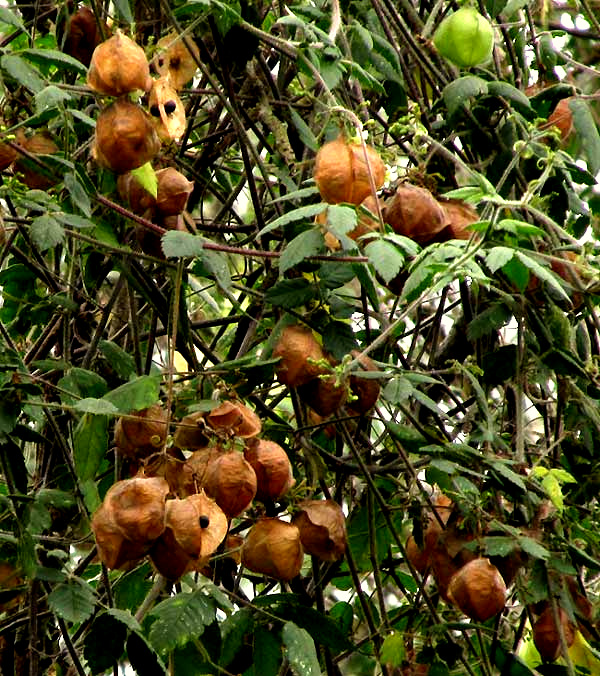
Atop a tree near the garden there's an area about the size of a refrigerator covered with a tangle of vining stems and leaves among which hundreds of inch-wide (2.5cm), balloon-like, inflated capsular fruits are conspicuous, a small part of which is shown above.
In that picture notice that a few mature, brown bladders have lost all or part of their coverings, revealing small, spherical, black seeds suspended on thin, papery walls within the bladder. If you look closely, you can see immature flowering heads forming here and there on the vine, indicating that this vine produces lots of flowers and fruits over a longer period of time. The vine's twice-compound leaves are separated into three main subdivisions, which themselves are divided into three shallowly toothed leaflets, easier seen on a low-growing part of the vine shown below:
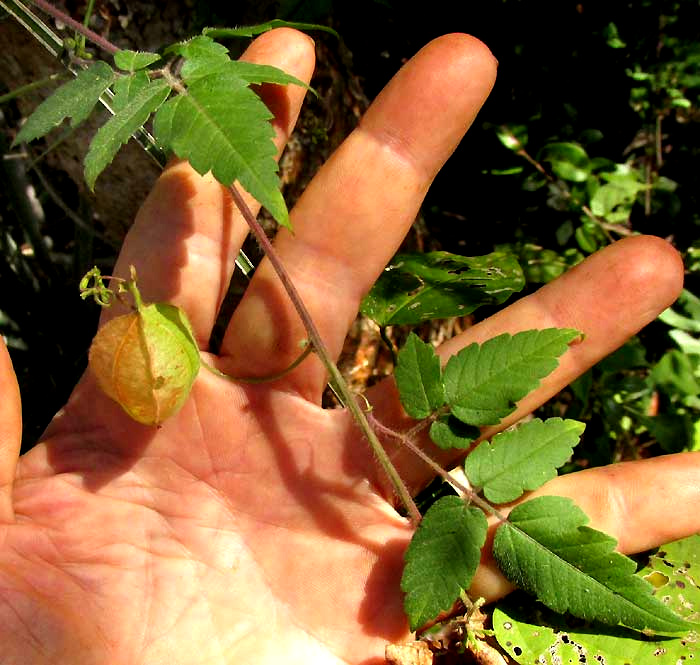
Having a bladder handy, we can open up and see better how the pea-like seed is attached to a partition inside the three-partitioned bladder, shown below:
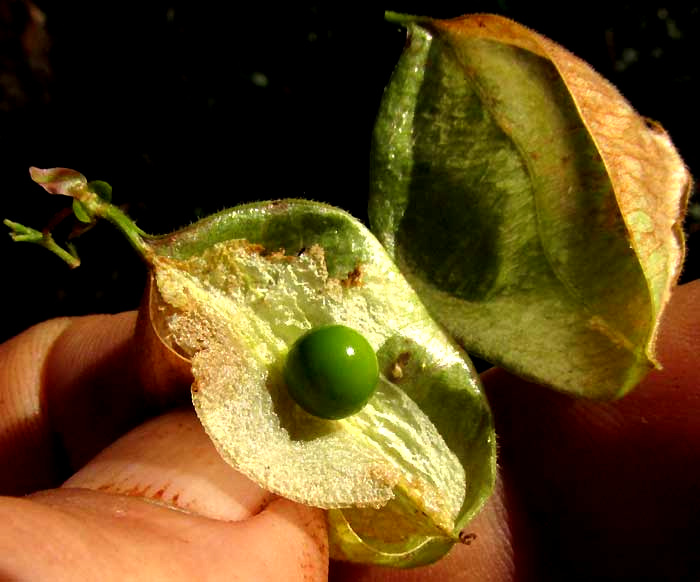
Even a few flowers still can be found. Though only about 5mm long (3/16th inch), they display the interesting, somewhat asymmetrical form shown below:
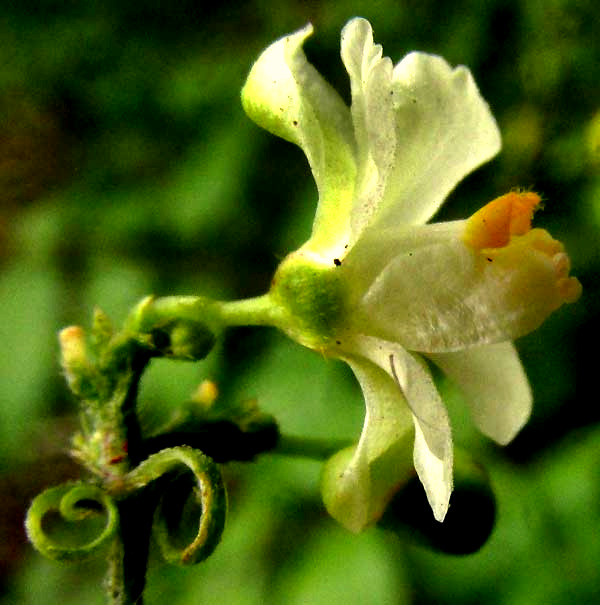
In that picture notice the vine's immature curling tendrils at the lower, left corner. The blossom displays four sepals and four petals, though it almost looks like eight white petals. The four sepals are slightly greenish on their backs and are modified to help the petals attract pollinators. The flower bears eight stamens of unequal length, the filaments tipped with tiny, white, pollen-producing anthers. The yellow, hairy item above the stamens at the picture's right side consists of petal appendages, apparently helping attract pollinators' attention to the inconspicuous white anthers. A different view is provided below:
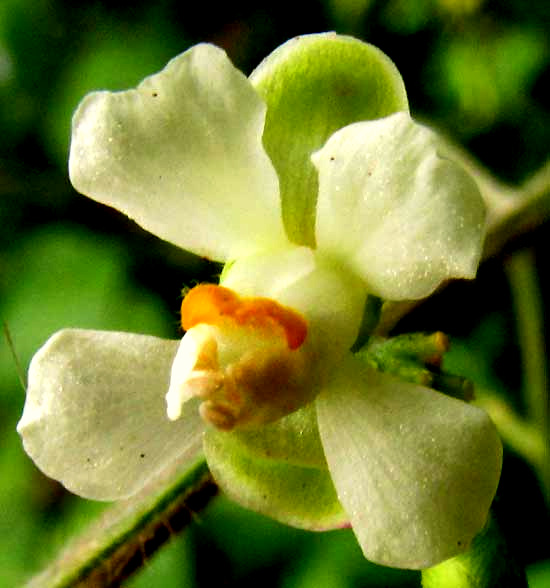
If this hadn't been such a well known, often encountered kind of vine, it might have been hard to identify because of the hard-to-see and sometimes hard-to-interpret features. However, when such "balloons" adorn such a vine, gardeners and plant lovers just know they have a balloon-vine, and that's the genus Cardiospermum, in the tropical/subtropical Soapberry Family, the Sapindaceae. Most members of that family are trees, shrubs or herbs, so the vining Cardiospermum is a little unusual in that family.
Knowing the genus, and having just three or four species of the genus in the Yucatan, it was easy to determine that here we have CARDIOSPERMUM CORINDUM. That's a good old Linneaus name, which indicates that the earliest European explorers in the Americas quickly ran into it. The species is distributed throughout tropical America as well as arid southern Africa. Species in the genus, besides being called balloon-vine, also sometimes are known as heartseed and -- hard to imagine -- love in a puff.
You might be interested in comparing our Cardiospermum corindum to a similarly wide-ranging and well known balloon-vine species encountered in upland Querétaro, Cardiospermum halicacabum, at www.backyardnature.net/q/balloon.htm
I find Cardiospermum corindum listed as a medicinal plant for the Yucatan, without indication of its use. However I read that Cardiospermum seed extracts are included in skin creams that claim to treat exzema and other skin conditions.